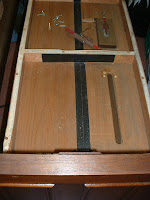Donating to a Museum???
This way of passing on your collection item is not a bad plan. BUT if you want your collection preserved and available to the public, there are a few areas that need to be considered, before making a donation of machines or literature.
1) When you donate an item you lose all control over it. Period.
2) No reputable school or museum will guarantee much of anything about display or retention of a donation. If they do make such a guarantee, don't believe them. Over time, as the situation changes, the pledge will become undoable or forgotten.
3) Your best indication of probable fate of your donation, is to check the fate of past such donations. If they refuse to discuss that subject, then you have your answer and can walk away. Your best chance for continued public access to your donation, is their past record of such access.
4) You need to trust that if the item is eventually sold, it will go to someone who appreciates it.
We believe that DeBence Antique Music World is an example of a proper place to donate. We hold in trust, what Jake DeBence collected, thus preventing it from being sold to and probably being hidden in many different private collections. We keep all of it available for public view and performance. We have received and added a number of major instruments over the last 20 years.
The Hammond/Aeolian Player Organ, the Nelson Wiggen Style 6, the Aeolian/Duo Art Grand, The Sohmer-Welte Upright and the Aeolian Duo-Art Grand Reproducing System all came to us needing repairs and have been restored and are exhibited and played for visitiors.
We have filled gaps in our phonograph and instrument collections with donated instruments which have been repaired and are now on display. We have been given several non-working phonographs, duplicating items which we already have and have restored and sold them. Proceeds from such sales are used for restoration and maintenance of the instruments in the collection and if the donors care, they are told where the money from the sale of their machine was used.
In summary, don't discount this way of passing on your collection items, as there are worthy places to donate an item where it will be restored, preserved, exhibited and played. You just need to do your homework and research to find them.









